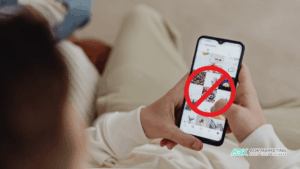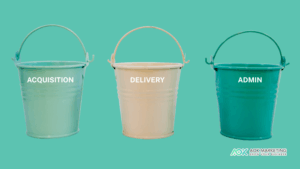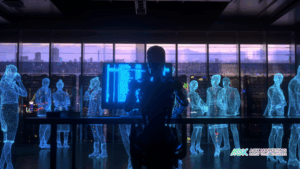Global Overview: Immersive Tech Transforming Marketing
Augmented reality (AR) and virtual reality (VR) have rapidly evolved from novelties into powerful marketing tools worldwide. Businesses across industries are embracing these technologies to create immersive, interactive brand experiences that captivate consumers.
The global AR market alone is projected to exceed $100 billion by 2025, and VR is also on a strong growth trajectory. By the end of 2024, an estimated 1.73 billion devices will support AR, reflecting how widespread this tech has become. VR adoption, while smaller due to hardware needs, still tops 171 million users globally (with 77 million in the U.S.). Notably, 91% of businesses report having adopted or planning to adopt AR/VR tech in some form,signaling broad confidence in its marketing potential.
Importantly, AR is currently more ubiquitous in marketing than VR. AR experiences are easily delivered via smartphones, which most consumers already own, whereas VR often requires dedicated headsets. This accessibility has positioned AR as a mainstream marketing channel, from social media filters to retail apps. VR, by contrast, offers fully immersive engagement and has been especially impactful in experiential campaigns and virtual events. Both technologies let marketers blend digital content with the real world (in AR) or transport users to virtual worlds (in VR), enabling memorable storytelling and product interaction that go beyond traditional media. In short, AR/VR are reshaping digital marketing by engaging consumers in deeper, more personalized ways than ever before.
AR in Digital Marketing: Applications and Examples
AR’s strength lies in enhancing reality with digital overlays, making it ideal for product visualization, interactive ads, and on-the-go experiences. Marketers are using AR to let consumers “try before they buy” and interact with products virtually – increasing confidence and purchase intent. For instance, beauty retailer Sephora’s Virtual Artist app enables users to try on makeup via AR, which boosted conversions by 11.4% and cut return rates by 35%.
Furniture giant IKEA’s Place app lets shoppers see true-to-scale furniture in their own homes through AR, reducing returns by 30%. In e-commerce, these AR try-on tools bridge the gap between online convenience and in-store tangibility, resulting in up to 94% higher conversion rates compared to standard product pages. Consumers clearly appreciate such AR utilities – 61% prefer retailers that offer AR experiences, and 71% say they would shop more often if AR were available.
AR has also become a staple of digital advertising and social media marketing. Brands create AR filters, lenses, and effects that users can interact with on platforms like Snapchat, Instagram, and TikTok, blending advertising with fun user-generated content. A famous example is Taco Bell’s Snapchat lens for Cinco de Mayo, which turned users’ heads into a giant taco. This quirky AR lens was viewed 224 million times in a single day, setting a Snapchat record and demonstrating the viral reach of AR campaigns.
Likewise, cosmetics brands and fashion retailers now regularly deploy AR lenses that let users virtually try on a new lipstick shade or pair of sunglasses within social apps – effectively turning consumers into brand ambassadors as they share these AR-enhanced selfies.
Pepsi’s “Unbelievable” bus shelter in London used AR to entertain commuters with scenes of alien invasions and robots on the street, illustrating how creative AR campaigns can grab public attention. Beyond personal devices, AR is invigorating physical advertising and out-of-home marketing. A standout case is Pepsi’s AR bus stop stunt in London: Pepsi installed a digital screen on a bus shelter that looked like a transparent window, then overlaid unbelievable AR visuals onto the live street view – from UFOs descending to a tiger on the loose. Unsuspecting commuters were astonished by the prank, which perfectly conveyed Pepsi Max’s “Live For Now – Unbelievable” message. A video of people’s reactions went viral with over 8 million views on YouTube. The campaign generated massive earned media buzz (reaching 385 million people) and even lifted local Pepsi sales by 35% during that period. This success underscores how AR, when cleverly integrated with a brand story, can capture both live audiences and online viewers through shareable content.
AR is equally powerful for interactive promotions and gamified marketing. Fast-food chain Burger King’s “Burn That Ad” campaign is a prime example of using AR for engagement. In 2019, Burger King’s app invited users in Brazil to point their smartphone at rivals’ print or billboard ads; the AR experience would virtually set the competitor’s ad on fire and then reveal a coupon for a free Whopper. This tongue-in-cheek stunt not only fit BK’s playful brand image but also drove people to download the app (over 1.5 million new app downloads) and redeem coupons in-store. By blending the real world with dramatic digital effects, Burger King turned a traditional ad war into an interactive game for consumers.
In retail and experiential marketing, AR adds a layer of information and entertainment that can increase customer engagement on-site. Retailers have used AR in stores and packaging – for example, Toys “R” Us Canada worked with Snapchat to create AR “toy store portals” that shoppers could walk through using their phones, resulting in 38% higher engagement and a 22% boost in conversions for featured products. Even convenience stores are experimenting with AR: 7-Eleven introduced AR-enhanced shelf labels that shoppers can scan to see nutritional info and promotions, making the shopping experience more interactive. These examples show that from home try-outs to outdoor billboards, AR’s ability to merge digital content with the real environment opens up endless creative avenues for marketers.
VR in Digital Marketing: Applications and Examples
VR offers a different value proposition by immersing consumers entirely in virtual brand worlds. It’s being used to deliver story-driven experiences, virtual tours, and rich demonstrations that can evoke emotions and engagement in ways standard media cannot. One prominent use of VR in marketing is to enable consumers to experience destinations or products virtually – a strategy often termed “try before you buy” in travel and real estate.
A classic example is Thomas Cook’s travel VR campaign, where the tour operator set up VR headsets in its stores to let customers take a five-minute virtual vacation to New York City. The result was a 190% increase in real-world bookings for New York excursions at those locations, proving that an immersive preview can significantly influence purchase decisions. Similarly, Marriott Hotels created the “VR Postcards” and Teleporter experiences: VR installations that let people teleport to a Hawaiian beach or a London skyscraper complete with 4D sensory effects like breeze and mist. This innovative campaign not only generated extensive PR, but Marriott reported that the immersive experience inspired higher interest in travel among participants.
Marriott’s “Teleporters” allowed users to step into a phone booth–like VR pod and visit far-off destinations virtually using Oculus Rift headsets, blending sight, sound and even physical sensations to deepen engagement. VR is especially effective for brand storytelling and experiential marketing. By putting on a VR headset, consumers can be transported into scenarios that convey a brand’s narrative or values in an unforgettable way. For example, Marriott’s Teleporter (shown above) toured various cities to promote the idea of travel; users who entered the booth felt as if they were standing on a Maui beach or atop a London tower, thus associating Marriott with cutting-edge, aspirational travel experiences.
Automotive brands have also leveraged VR for marketing – allowing virtual test drives of new car models or showcasing concept cars in immersive showrooms. Audi and Volvo were early adopters, offering VR car demos that let customers “sit” in a virtual vehicle and drive through realistic environments, saving the need for physical inventory while exciting car enthusiasts. Such VR demos can build anticipation and preference for a product before it even hits dealerships.
Entertainment and sports marketers have used VR to create buzz and deeper fan engagement. From HBO’s Game of Thrones “Ascend the Wall” VR experience (which let fans virtually ride a lift up a 700-foot ice wall) to the NBA’s VR courtside experiences, these initiatives drive brand loyalty by offering exclusive immersion. Even consumer goods have found creative angles: Oreo released a whimsical 360° VR video whisking viewers into the “Oreo Wonder Vault” – an animated fantasy world inside a cookie, reinforcing its playful brand image. In advertising contexts, 360-degree videos and VR content shared on platforms like YouTube and Facebook have become popular; they invite users to look around and explore ads interactively, dramatically increasing viewing time compared to standard videos. For instance, The New York Times distributed Google Cardboard VR viewers to subscribers and released immersive branded films (sponsored by brands like MINI and Volvo) – blending journalism, marketing, and VR tech to keep audiences engaged.
Moreover, VR is becoming a fixture at events and trade shows. Brands are setting up VR booths or simulations that attract crowds and generate media coverage. A notable case was Samsung’s product launch showcases: Samsung has used VR at launches to give global audiences a front-row experience of new devices. Likewise, companies like Coca-Cola have dabbled in VR games and virtual concerts as part of their marketing in the so-called metaverse. These efforts illustrate how VR can amplify event-based marketing, allowing people anywhere to participate virtually. While VR campaigns typically reach a smaller audience than mass-market AR (due to headset requirements), they offer unparalleled immersion and emotional impact. As VR hardware becomes more affordable and untethered (e.g. Oculus Quest or the upcoming Apple Vision Pro), marketers are anticipating broader reach for VR initiatives. In fact, industry research predicts the AR/VR user penetration will surpass 50% of consumers by 2025. We can expect VR to increasingly complement AR in digital marketing, reserved for those high-impact storytelling moments and experiential tie-ins that truly wow an audience.
Future Outlook: The Next Frontier of AR/VR Marketing
Looking ahead, experts agree that AR and VR will play pivotal roles in the future of digital marketing – with capabilities enhanced by other emerging technologies. One clear trend is the integration of AR/VR with AI and advanced analytics. AI can help personalize AR experiences (for example, recommending products to try in AR based on user data) and create more realistic virtual environments in VR. The rollout of 5G networks is another enabler, as it provides the low latency and high bandwidth needed for smooth, high-quality AR/VR content streaming. This will likely lead to more cloud-based AR apps and VR streaming services, making immersive experiences accessible on-demand, without large downloads. In terms of hardware, the industry is abuzz about upcoming AR glasses and mixed reality headsets (spurred by devices like Apple’s Vision Pro) that could bring immersive marketing literally into consumers’ field of view in everyday life. As Apple’s CEO Tim Cook predicted, AR may become something people use daily “almost like eating three meals a day,” becoming an integrated part of shopping and brand interactions.
Market forecasts back up this optimism. Global spending on AR/VR marketing is climbing fast – one analysis projects AR/VR in marketing will be a $24+ billion market by 2033, growing ~18% annually. Specifically, AR advertising revenue worldwide is forecast to reach $5–8 billion by 2025, as more brands invest in AR ads and sponsored filters. The U.S. immersive marketing segment (AR/VR-powered marketing) is expected to expand over 25% yearly through 2030. This growth is fueled by proven ROI: AR experiences have been shown to double consumer engagement compared to non-AR media, and VR campaigns can drive measurable lifts in brand favorability and sales (as seen in case studies above). Consumer attitudes are also increasingly favorable. Surveys show 71% of consumers tend to favor brands that offer AR capabilities, and younger generations in particular are keen on these interactive, tech-savvy experiences.
In the coming years, we can expect AR to become more standard in e-commerce and social media marketing – think ubiquitous AR product try-ons on every major retail site, AR influencer content, and location-based AR promotions via your phone’s camera. VR will likely see greater adoption for high-impact storytelling, training, and branded entertainment as devices spread. The concept of the metaverse – a convergence of AR, VR, and online worlds – has prompted many brands to experiment early, hosting virtual showrooms or events in platforms like Roblox, Fortnite, or dedicated VR spaces. While the metaverse hype is still shaking out, it’s clear that the lines between digital and physical brand experiences will continue to blur. Marketers who skillfully blend these realms stand to capture the attentions of an audience that is both increasingly digital-native and craving authentic, engaging experiences. As one agency executive put it, AR/VR should not be used as mere gimmicks but as tools to “elevate the delivery of the message” beyond what traditional tech can do. When used thoughtfully, these immersive technologies can strengthen emotional connections, boost loyalty, and ultimately drive growth in ways that set brands apart from the competition.
Local Perspective: Trends and Players in Canada’s AR/VR Marketing
Canada offers a representative microcosm of the AR/VR marketing boom, with its own emerging trends and notable players. Canadian consumers are highly receptive to immersive tech – 66% of Canadian shoppers favor AR for visualizing products before purchase. This demand is reflected in the marketing strategies of Canadian retailers and brands. In 2025, a report found that Canadian retailers using AR (for virtual try-ons, interactive catalog apps, etc.) achieved up to 250% increases in conversion rates on their e-commerce platforms. Major brands in Canada have been quick to leverage proven AR solutions from global playbooks: Sephora Canada uses the AR makeup try-on to let customers virtually sample products, and IKEA’s AR furniture placement app is popular among Canadian homeowners – both aiming to boost customer confidence and reduce returns. In fact, Shopify – the Ottawa-based e-commerce platform – has built-in AR features for online stores; Canadian merchants using Shopify’s AR functionality see 94% higher conversion on average than those without AR. This has encouraged even small and mid-sized businesses to explore 3D modeling and AR integration in their marketing, often with the help of local AR/VR developers.
Beyond retail, Canadian marketers are blending AR into physical experiences and campaigns. Toronto-based agency Femme Fatale Media reports that when they incorporate AR filters or AR gamification into beauty brand campaigns, post-campaign engagement jumps by 65% compared to traditional media. Brands have also partnered with tech platforms to create localized AR experiences – for example, Toys “R” Us Canada’s collaboration with Snapchat (as mentioned) drew in families to stores for an interactive adventure, and convenience chain 7-Eleven Canada’s AR-enabled info labels add value to the in-store journey. These initiatives show a trend in Canada towards using AR not just for online shopping, but to enrich omni-channel marketing: connecting digital content with real-world retail environments to drive traffic and sales. On the VR front, adoption in Canada has been steadier but growing. We see VR used in industries like real estate (virtual condo tours in Vancouver and Toronto’s hot property markets), tourism (virtual tours by Destination Canada to entice international travelers), and automotive (dealerships offering VR car explorations). The Canadian VR market was valued at roughly $325 million in 2024 and is projected to expand as consumer VR usage rises and more content becomes available. Companies like IMAX opened a VR Centre in Toronto for a period, and Montreal’s vibrant gaming sector has spilled into VR experiences that sometimes double as marketing for entertainment franchises.
Notably, Canada is also home to several top AR/VR tech firms and marketing agencies that are driving innovation. For instance, MetaVRse (Toronto) and LBC Studios (Vancouver) have created AR/VR marketing content for global brands. This local expertise helps Canadian campaigns remain cutting-edge. The Canadian government and industry groups have supported immersive media through grants and incubators (like Ontario Creates), further bolstering the ecosystem. As a result, Canada’s share of the AR marketing software market is growing – forecast to reach CAD $308.6 million by 2025 in retail alone.
In summary, Canada’s marketers are quickly learning that AR and VR are not just flashy tech, but practical tools to boost sales and engagement. Canadian consumers, much like global audiences, respond with enthusiasm to AR/VR when it offers utility or delight: whether it’s finding the perfect sofa size via AR or being wowed by a VR experience at a local event. The key players in this region – from retail brands to tech startups – are increasingly collaborating to integrate immersive experiences into marketing strategies. This local momentum mirrors the global trajectory: AR and VR are set to become regular elements of the marketing mix. Brands that embrace these technologies early, both globally and in Canada, have the opportunity to stand out in crowded digital marketplaces by offering customers something more vivid, interactive, and personal. As AR and VR continue to mature, the line between marketing and entertainment will blur, and the winners will be those marketers who can craft experiences that resonate on a human level through the clever use of these immersive tools.
Sources: The information and examples above are supported by market research and industry reports, including AR/VR usage statistics threekit.com demandsage.com, expert analyses loungelizard.com marketingdive.com, and case studies of brand campaigns marketingdive.com marketingdive.com, grandvisual.com.
About The Author
Marketing Team
The AOK Marketing Team is a diverse group of amazing individuals driven to help all of our clients succeed. Great people are everywhere, and we believe that people should control their workday, their work environment, and where they live. We have team members in 9 countries: United States, Canada, Egypt, Belgium, Ireland, Australia, India, Pakistan, and Hong Kong.
How can we help you?




